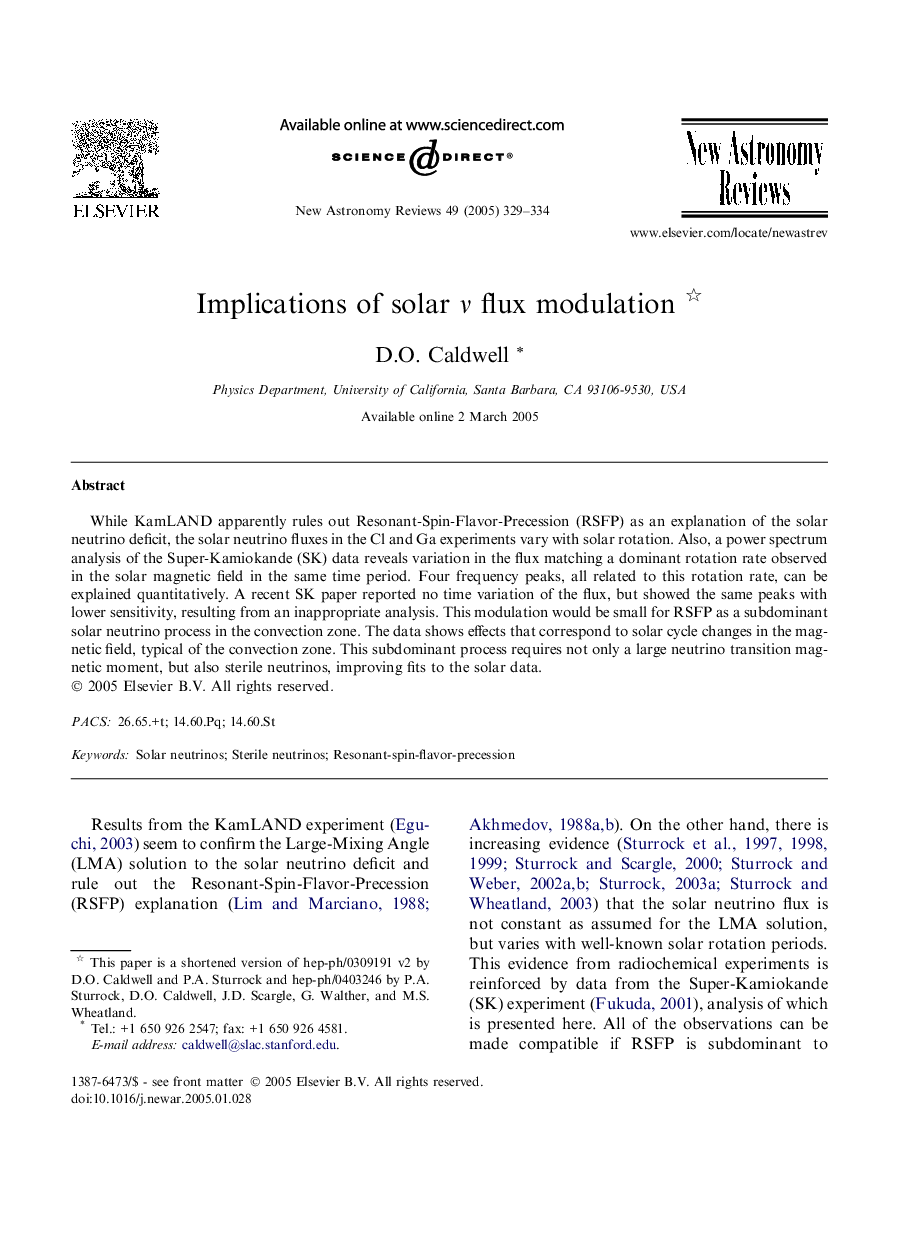| Article ID | Journal | Published Year | Pages | File Type |
|---|---|---|---|---|
| 9828041 | New Astronomy Reviews | 2005 | 6 Pages |
Abstract
While KamLAND apparently rules out Resonant-Spin-Flavor-Precession (RSFP) as an explanation of the solar neutrino deficit, the solar neutrino fluxes in the Cl and Ga experiments vary with solar rotation. Also, a power spectrum analysis of the Super-Kamiokande (SK) data reveals variation in the flux matching a dominant rotation rate observed in the solar magnetic field in the same time period. Four frequency peaks, all related to this rotation rate, can be explained quantitatively. A recent SK paper reported no time variation of the flux, but showed the same peaks with lower sensitivity, resulting from an inappropriate analysis. This modulation would be small for RSFP as a subdominant solar neutrino process in the convection zone. The data shows effects that correspond to solar cycle changes in the magnetic field, typical of the convection zone. This subdominant process requires not only a large neutrino transition magnetic moment, but also sterile neutrinos, improving fits to the solar data.
Related Topics
Physical Sciences and Engineering
Physics and Astronomy
Astronomy and Astrophysics
Authors
D.O. Caldwell,
